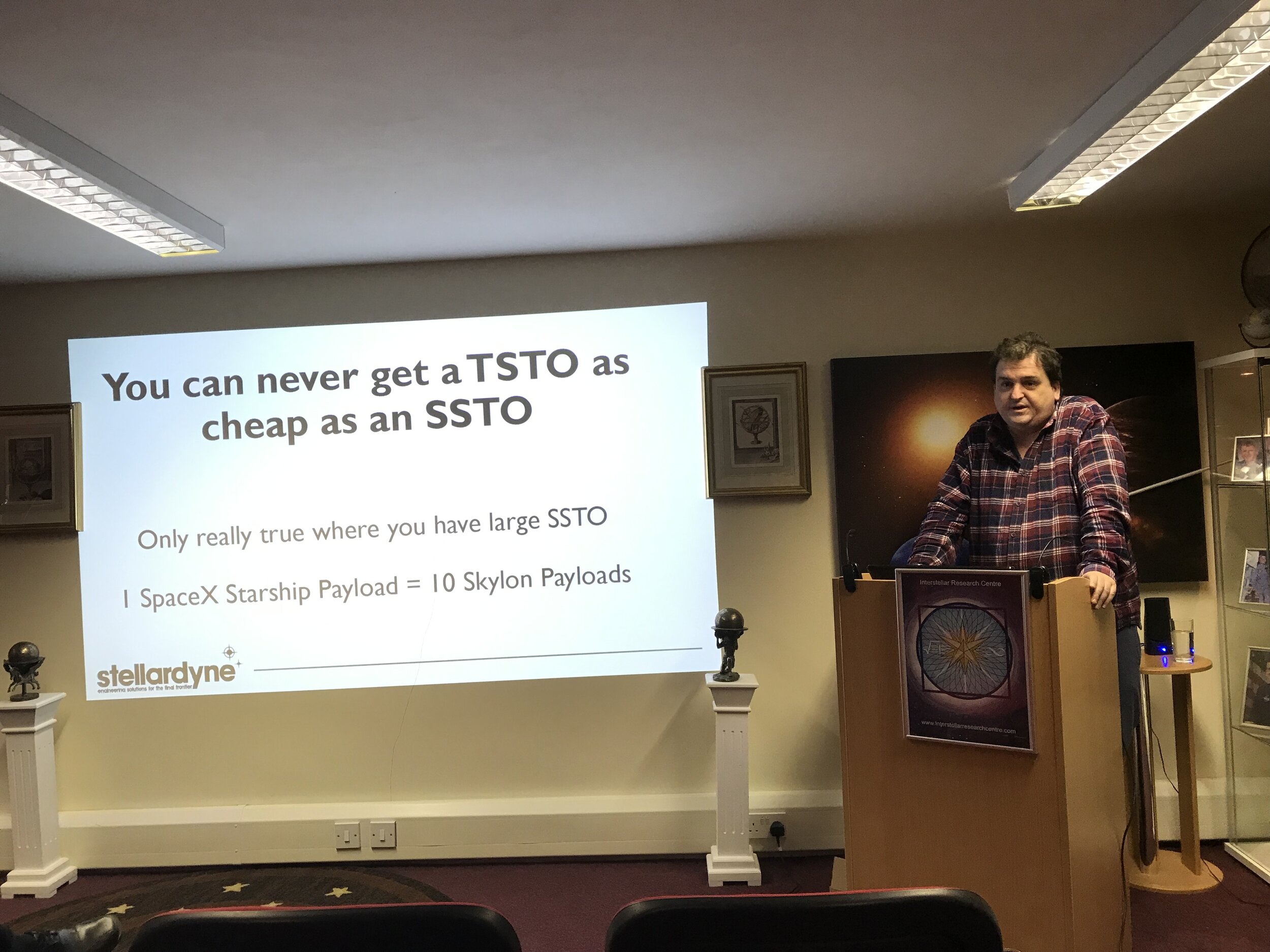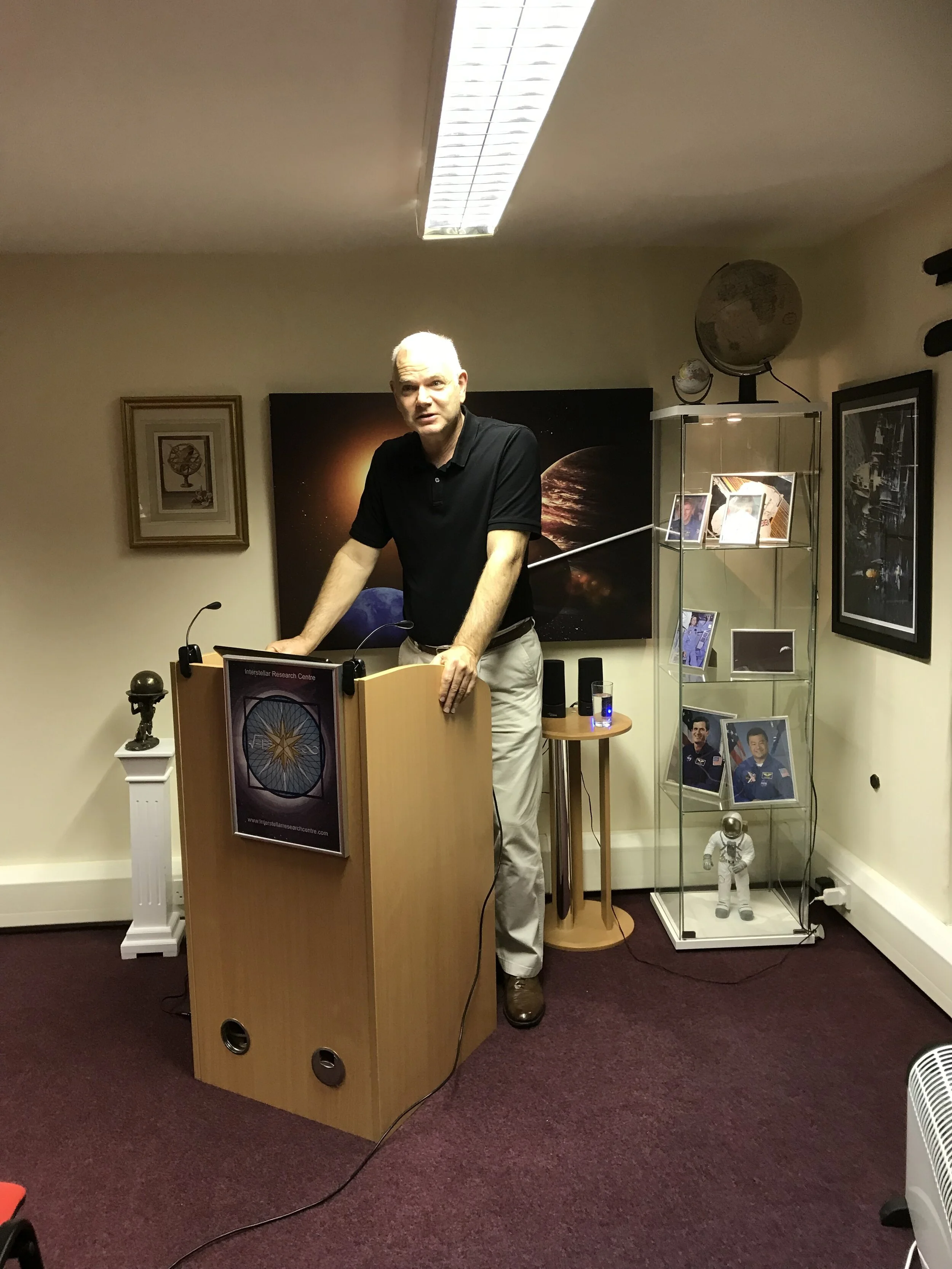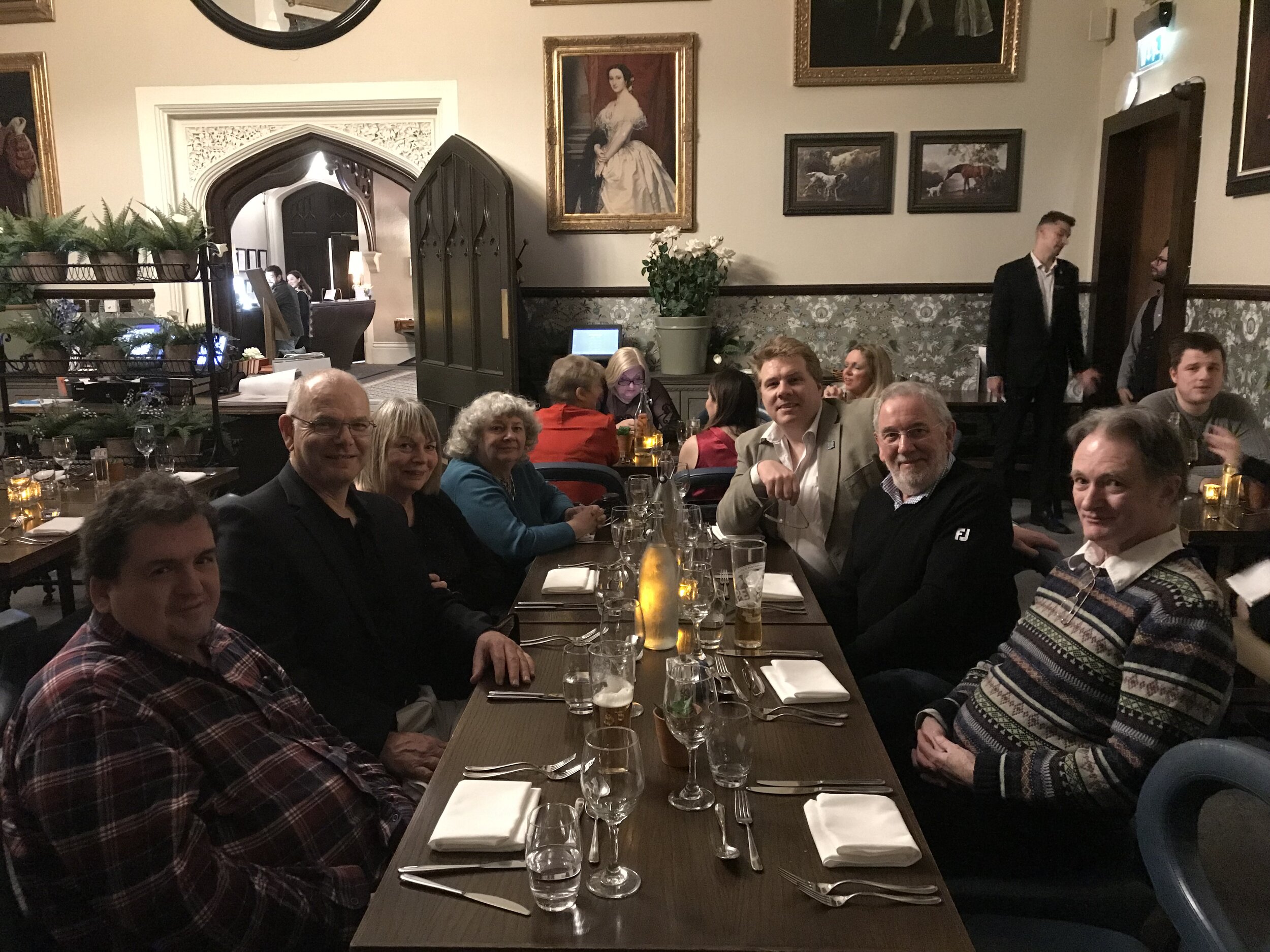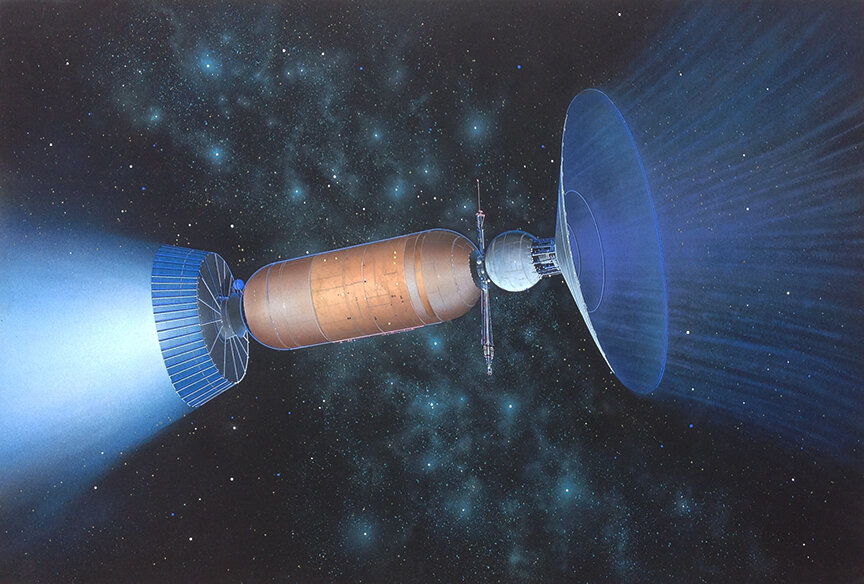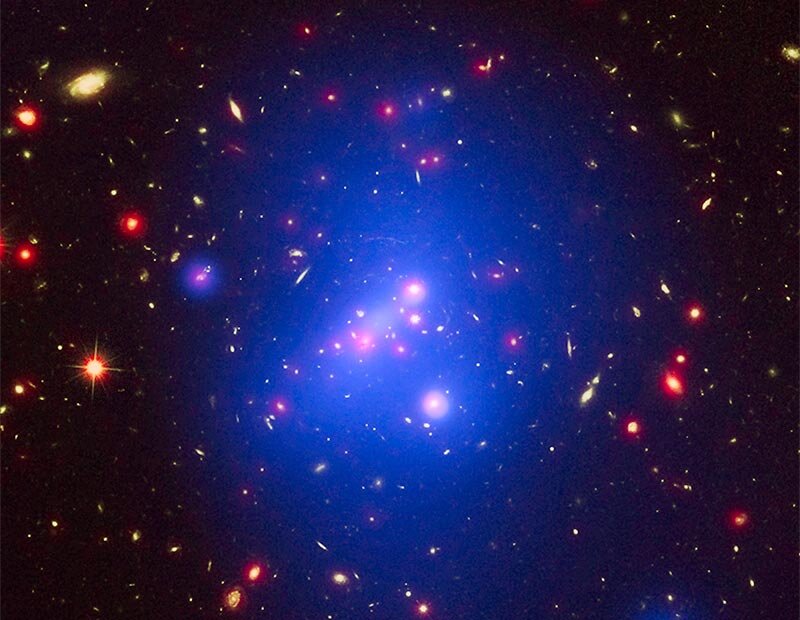I was very sad to hear of the recent loss of the physicist Freeman Dyson on the 28th February 2020. It just so happens that I last got an email from him on 8th February, only two weeks before he had passed. I did not have an impression that anything was wrong with his health, but I did get an impression he was very busy. My last words to him were “God speed and ad Astra” and little did I know this would be a metaphor for spiriting him away on the next great journey that awaits him in this fantastic Cosmos. I was not surprised to hear that he had passed away given how old he was, but I was saddened by it since Dyson had shown me tremendous personal support and kindness in the decade or so that I had corresponded with him as a fellow scientist.
As a student I had first come across his writing by reading about the struggles of Richard Feynman in solving the problems of quantum electrodynamics and how it was Dyson’s 1948 paper that had shown some clarity on what Feynman was saying with his unusual diagrams. This, and his work on Project Orion, a nuclear bomb advanced propulsion concept, had made him a legend as one of the smartest people on planet Earth.
I first made contact with Freeman Dyson when I was the Chief Editor of the Journal of the British
Interplanetary Society and I would ask him to review papers. I will never forget the very first review he ever did for me, because it just struck me as the thoughts of an incredibly clear and logical mind that was able to cut through the noise of a scientific paper and get straight to the heart of the argument and dissect it to its fundamental truths. When I interacted with hundreds of other authors and reviewers over the years, nobody else demonstrated an equivalence of thought in quite the same way, and it was an example to me of what the uncluttered mind of a human being was really capable of when high reason and truth is ones goal.
When I was the Vice President of Icarus Interstellar, a United States non-profit I was involved with co-founding, in our bid to win the NASA/DARPA 100 Year Starship competition, Dyson had agreed to support us after I asked him and had approved his name to a signatory of support; among other great science and science fiction people, this letter also included both Patrick Moore and Les Shepherd, who would shortly after pass away. Unfortunately, although we went onto win the 100 Year Starship, others that we teamed with clearly had other plans and so we were unable to execute on our vision.
So it was that in 2012 I moved on from Icarus Interstellar and worked to found the Initiative for Interstellar Studies in the United Kingdom, also called the Institute for Interstellar Studies in the United States. Once again, Freeman Dyson was supportive, and agreed to serve on the advisory committee and did so for the first five years of its operation whilst I was the leading Executive Director. In his characteristic efficient style his response was to the point “I am willing to serve if needed”. I would correspond with him a few times a year and consult his opinion on various issues. He was also very supportive of the Breakthrough Initiatives Project Starshot effort to send a space probe towards the nearest stars within decades, and served on its advisory committee. This is an effort which I also support serving on the same advisory committee.
Over the years, I had many wonderful conversations with Freeman Dyson. In one such conversation we discussed the accelerated expansion of the universe and the nature of dark energy, and Dyson just went for the jugular and questioned the very meaning of the name “I think the idea is wrong because the name ‘dark energy’ is misleading. The right name for ‘dark energy’ is ‘non-linear expansion’. It describes the shape of the universe, not the existence of a new form of energy”.
In another dialogue we discussed Project Orion. I had read Dyson’s earlier papers when he had been a proponent of the project and then his later reversal. I had spent many years working as a physicist on thermonuclear weapons development and I was attracted to Project Orion as an application of this technology. Yet it seemed to me that although it would not be desirable to launch something like an Orion from the surface of the Earth (due to the risk of atmospheric contamination of radioactive material), given that the space around the gas giant Jupiter was so radiative anyway why couldn’t we launch from there instead? Dyson came back along the lines: “We wouldn’t need to go that far, all we would need to do is launch outside of the Earth’s magnetosphere and that was sufficient”; an indication to me that there were circumstances in which he might support the launch of such an energetic reaction engine. Even the American astronomer Carl Sagan had said he couldn’t think of a better use for such a technology.
We never discussed his well-known criticisms on anthropogenic global warming in any detail, but I was aware of his views and it was such a pity that his unbiased intellect was not listened to merely because his views were contrary to the consensus. He was never carrying some political perspective here and only giving his well-qualified views as an objective physicist. Ultimately, I believe a failure to listen to his opinion will harm the environmental movement in the long-run and this is tragic. Fortunately, those views are online for others to read and watch.
In 2011 I had organised a symposium in London on the Philosophy of Olaf Stapledon, the British philosopher turned science fiction writer. Having read all of the writing of Arthur C Clarke I had then turned to those that influenced him, and this included Stapledon’s 1930 ‘Last and First Men’ and his astonishing 1937 novel ‘Star Maker’. Dyson admitted himself that Stapledon is the one that really originated the idea of a star surrounded by a large artificial sphere able to capture all of its radiative energy – and he expressed a personal wish that at the very least they should be known as Stapledon-Dyson spheres, rather than just Dyson spheres; always wanting to make sure proper credit was given. This was a man of integrity.
In my own paper, later published in 2016 in the journal Axiom and titled ‘Is the Concept of (Stapledon) Universal Mentality Credible?’ I leaned heavily on Dysons viewpoints quoting him in various parts from his wonderful 1979 book ‘Disturbing the Universe’ to illustrate his belief in the potential of a conscious universe: “The laws of subatomic physics cannot even be formulated without some reference to the observer. ‘Chance’ cannot be defined except as a measure of the observer’s ignorance of the future. The laws leave a place for mind in the description of every molecule…..I do not feel like an alien in this universe. The more I examine the universe and study the details of its architecture, the more evidence I find that the universe in some sense must have known that we were coming…..I do not claim that the architecture of the universe proves the existence of God. I claim only that the architecture of the universe is consistent with the hypothesis that mind plays an essential role in its functioning”.
For some time, I was elected onto the governing council of the British Interplanetary Society, and whilst there I was one of the people that put his name forward to become an honorary fellow of the Society. I was very pleased to see that happen eventually in 2017, and his acceptance letter to the BIS is shown below also giving some interesting views on a few topics, writing from the Institute for Advanced Study.









![4-engine Staged Endeavour (progenitor to Pegasus) [M. Lamontagne]](https://images.squarespace-cdn.com/content/v1/5ca7e28c32c85e0001f17bad/1574722073182-Z8X1NMNJ0QYPDRR8ADFN/Endeavour5_Scene+2.jpg)






